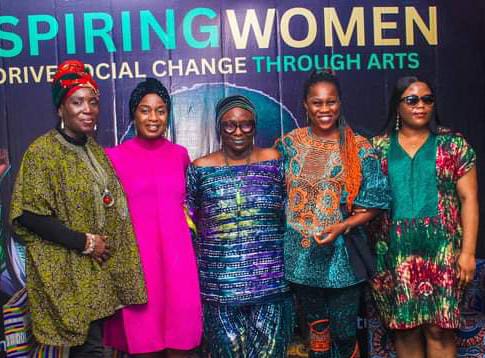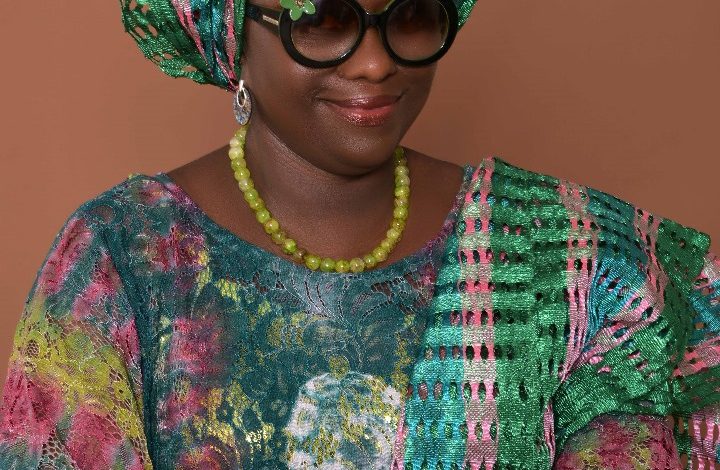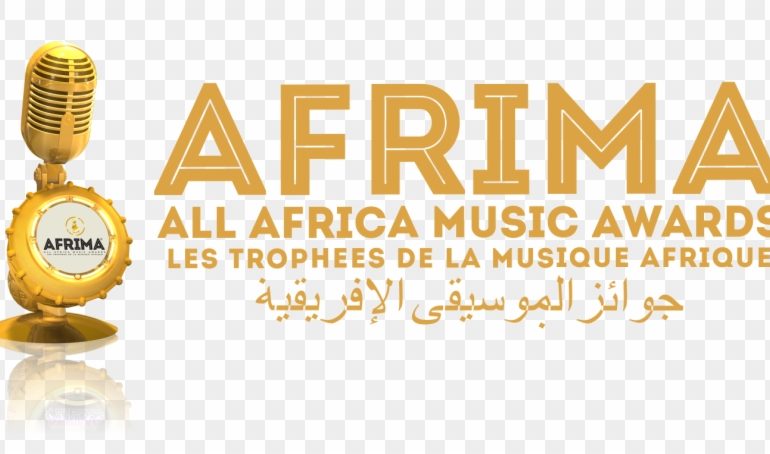The Sola Alamutu model: Women-led art as catalyst for social change, advocacy

We have to rethink, rejig the entire educational system: the way we think, act and even talk, says ace broadcaster, Bimbo Oloyede
‘Art is a very powerful tool we can use to discuss difficult, sensitive issues’
By Godwin Okondo
IT was her 60th birthday, and Unchained Vibes Africa (UVA), where Sola Alamutu is the Research and Advocacy Manager, turned the celebration into a moment to reflect on the impact of women in the arts, advocacy and freedom of expression campaign and how they are engaging the civic space. The civic engagement space, working with children and environmental sustainability have been where Alamutu has made impact right from her Arterial Network Africa days, and now at UVA. Committee for Relevant Art’s board chairman and chair, Chief Kayode Aderinokun and Mr. Jahman Anikulapo were also present.
During the panel session moderated by tourism promoter and visibility strategist, Nnenna Fakoya-Smith, writer, performance poet, and social activist, Iquo DianaAbasi, performance and spoken word poet and culture journalist with The Nation newspaper, Evelyn Osagie, founder of Hope Inspired Foundation for Women and Youth with Disabilities (HIFWYD), Ejiro Sharon Okotie and emerging Nigerian radical environmentalist and founder of Mental and Environmental Development Initiative for Children (MEDIC), Doyinsola Ogunye engaged in an enlightening discourse on how Alamutu has used her art to serve as catalyst for social change, and how other women, particularly young wmen, could follow her illuminating example.
Women as catalysts
DianaAbasi: You can express different thoughts and displeasure with art, whether its poetry or performance art. We have heard conversations and panels at the Green Festival where we have young people, most of them teenagers, discuss issues the public have no idea about. It could be something about gender-based violence, and you would be amazed by how much they know about this. They even know that gender-based violence has two sides. Having those kinds of conversations, those platforms enable young people and adults to air their views, and also reshape ideas and change perceptions.
When you have different expressions of art, whether you are doing sculptures, poetry or drama, it’s a very strong way of sending a message. We bring a different flavour to the conversation. A lot of the big issues we have in society started from a lack back at home, and as we all know, mothers are seen as the first point of socialization in the first months of care in children. When a woman leads that kind of initiative, she brings a kind of special touch to it. Women can share ideas and also bring solutions to the problems that we think are for the boys and men.
Osagie: A lot of the time, Alamutu drives arts through the voices of children to engage a wider audience. Also, hearing children acting or saying those messages drives the point home for a lot of people. You find that it resonates more in people when children are speaking to us, and that’s why we need to celebrate her.
In 2019, I started an art-to-the-street project using my photography, artwork and poetry, and having an open-air community engagement and what you call community theatre. What I did was to write my plays about corruption, election and peace, using market women as my cast, and I made them practice and they become stars in the community where they know them as mothers. I noticed that the community became part of it. They took the play from me and took ownership of it, and women came around donating foodstuffs and cooking it, and everyone ate.

Evelyn Osagie (left); Doyinsola Ogunye; Green Queen, Sola Alamutu; moderator, Nnenna Fakoya-Smith and Ejiro Okotie after the panel session on ‘Inspiring Women to Drive Social Change Through Arts’ at Alamutu’s 60th birthdaya celebration… in Lagos
Okotie: Art is a very powerful tool you can use to discuss difficult or sensitive issues, and one area that I identified in 2019 was areas around expression of sexuality in society. Society just thinks that you are asexual and you don’t have the right to have information and positive sexual relationships. Because of the way our society is, as women, we are not allowed to express our sexuality or even talk about it. It’s even worse for women with disabilities.
One of the ways I have been able to address that is to use the arts; so, we produced a short documentary, with women having disabilities tell their own stories, positive stories of sexual experiences, their sexuality, expressing it in the best way that they could, and that’s one strategy that I think that we have had, to have these women tell their own stories in their own voices. That’s another thing that art does. It gives an individual the charge to be able to tell her or his own story in the best way possible.
Art can also be a source of healing. When you talk about gender-based crimes, I have had initiatives whereby we use visual arts as a form of therapy for survivors of gender-based violence. On the other hand, as a means of livelihood, they piece those artworks together and they sell them to make an income and also support themselves. You see that across different angles, you can use art to advance, and that’s one thing we have done. On the third part of it, talking about the Green Queen, Sola Alamutu, I remember in 2018, during the Lagos Book and Art Festival, we had some of the students who presented a song. For me, music is one thing that has helped me navigate life, and for a lot of visually impaired people as well. There were good side comments while they were performing that day. Aunty Sola is very intentional about inclusion, and when you come (to her festival), you should be ready to get your hands dirty.”
Ogunye: Art speaks a thousand words. How it appears to one person would not be the same to another. Depending on the type of art — creative or visual, you are allowed to express yourself in such a very profound way and whoever is looking or listening to the art is impacted, as opposed to just being written. Every time I see Aunty Sola, she embodies what she does. Her earrings are made out of plastic bottles or she’s wearing a bracelet made out of seashells, and you can see it. She has embodied it, and it’s only a woman that can do it in that way. Art is quite deep, and she’s been able to tell that story over the years.
Challenges and opportunities
DianaAbasi: I think it’s a mindset thing. Many of our girls are raised to believe that at the end of the day, their highest role is to be wives, mothers and caregivers. This is a great responsibility. However, we find out that it’s the boy who is encouraged to be everything. From childhood, the route of your dream as a girl is narrow and you don’t think you can do it. If a girl decides she wants to act, she has to be very strong and she needs to have the confidence to go ahead and do it, because all sorts of things would be thrown at her, and she would be labelled a loose woman if she goes into the arts.
If you want to become an artist or a sculptor, many parents don’t think it’s a good enough career to pursue. They need the confidence. We need to keep encouraging more young women to express themselves in the arts, whether it is performance or fine arts, to build their capacity. If it means going out more to make it known to more females, maybe we should try and do that for now.
Osagie: It begins with all of us in the room. If a daughter or sister comes with an idea, how do we take it? When some of these opportunities come and the girl shares an information with colleagues that are supposed to be support groups, and they’re telling her she’s pushing too much… It happens in artists and writers’ groups where there are a lot of these opportunities and funding is always the problem. There are no focus clauses targeted at women in the arts. It starts from the artists that are around in the community. You find that abroad where you have community sponsorship, state sponsorships and all of that, to push, especially women, to go into advocacy and take their art beyond just trying to survive. We are all connected to big people, one way or another, and it’s left for us to sell that message. Let them put money in sponsoring young women. Female artists are going through a lot because they don’t have a registered market for their art, yet they’re talented.
Women Making Money from Art
Ogunye: I am actually a lawyer. After school, I decided that I wanted to clean beaches. That was when I was working with Aunty Sola and Beach Samaritan, and people would look me in the face and say, ‘you’re lazy!’ They would call me a beach comber, and ask me to go and look for a job. They would say it so passionately and it got really bad. There were days that I would be so broke and wouldn’t even know how to ask people for help, but I held on to it.
Someone said somewhere that if you see a problem and you’re able to solve it, sustain it and scale it, and people see what you’re doing, you are going to make it. At the time, I was just doing it, but now, companies reach out to me to clean my beach, and they’re paying me to clean that beach. I’m able to solve a problem and still hold on to the passion that I had. You need to have that staying power. It’s not going to be easy, because there were days I would cry myself to sleep. But now, what I was holding on to is now creating for me and other people as well. Hold on to whatever it is you’re doing, and when you see people doing things, please encourage them. Everyone has a role to play, but the easiest thing to do is to encourage a young woman doing something.
We need to sensitize people and create opportunities like this for people to network and see people in that space as well. I don’t think the government and policy makers are doing a lot, even in the secondary schools. We need to be at the gate and catch young people. Look at Serena Williams, for example, she started when she was very young, and it was people and the environment around her that made her talent become what it is today. If we are looking for the next big name, we need to catch them young.
Policy Making as Incentive
Ogunye: I would say that’s the one single thing that organizations and policy makers should do. Let’s go to fine arts, debates, spoken word poetry, and let’s have more conversations around that. As much as possible, we need to start taking steps, primary and secondary schools should add this to their curriculum. I have been to Elegushi arts and craft market, and I haven’t seen any woman in that space. There are a lot of female artists doing amazing work, but we don’t see them in associations like that. We need to push them to the forefront. We need to talk about it and bring them out.
Osagie: Some of these policy makers will tell you they are already doing things. We all know what is happening with the National Gallery of Arts and what is also happening at the National Theatre and Artist Village. People who do not value art and artists in that regard, what kind of policies do you think they would make? They would probably gather certain persons just to impress you, so you can’t say they didn’t or aren’t doing anything.
I want to use this medium to say that there are art associations that are already in these things that government can partner with. Different associations can also partner with each other to take some of these things to government, whether government likes it or not. A lot of the time, we think the people in government understand what is going on, but most times, they do not. We can also educate them, if they let us.
We must also be available, and I am sure Unchained Vibes Africa is also available. Look at what they have been doing with all the advocacies and court cases, and who says they can’t be a part of policy making as well, in terms of advising government? They can also have meetings to discuss these issues. This administration can take a different approach to it and bring people together, not just creating a fund that people cannot access, but to engage with practitioners and advocacy bodies as well.
Bridging Generational Gap
Former ace broadcaster at NTA, Mrs. Bimbo Oloyede weighed in on the conversation, especially on how to pool more young women into the art space the way Alamutu has been doing: “It’s worrisome that we don’t have more young women especially, and I think sometimes that those of us who have been advocates to some extent in different areas, I am not sure that we have really carried along the younger ones, and I also have the feeling that maybe because the strides that feminists have made in the last two to three decades, things have happened slowly and young people are in a hurry, especially those of today. So, if you look at some of the snail-like progress that has been made, I am not sure that young people really have the time or the patience to carry any more load. The load has already been carried and we still haven’t reached El Dorado.
“I am not quite sure how we can get them involved. Someone talked about including some of these aspects in the curriculum in school; I think that might help. Until we get to the point where the curriculum actually becomes practical for this environment, what we will be doing is simply overloading the children, because there are so many thing they are learning, and I am sorry, I don’t think everything they learn in school is actually useful to them. In any case, if it is useful today, five years from now, it’s already obsolete. We really have to rethink and rejig the entire educational system: the way we think, the way we act and even the way we talk. A lot of people have good ideas but they can’t express them. There is passion, and I think that can take us through.
“Mentorship can work if the young people think we have something to offer, but as long as there is a disconnect, and there is a belief that we don’t know anything, there is no rationalization that there is something to be said for experience. Even though those of us who are experienced also understand that there is something to be said for the way young people think. I learn from my children and grandchildren, but how willing are they to learn from me?”
Also for Okotie, “One of the things that came to my mind is, how are we contextualizing our approach? Because what applies for a young girl in the south is different from a young girl in the north, and we need to understand that contextual difference and then bridge it. There is also that inter-generational gap between people like Green Queen and the younger generation. So, how do we speak the language that these younger women can understand, and still be able to pass that knowledge that Green Queen’s generation has to us, and enable the younger generation to step up. I think it’s really about contextualizing. That’s one of the ways we can get young women out.
“When we have a programme, instead of focusing on the big names, we need to fish out those who are unknown and identify their voices, rather than bring only the faces of those who are on the screen. Go out there and look for those people who have what it takes and bring them out on stage. Those young women in the arts begin to become those faces, and once they are known, they go out and scout for those who are coming up. I think that is one of the ways we can get it right.”



